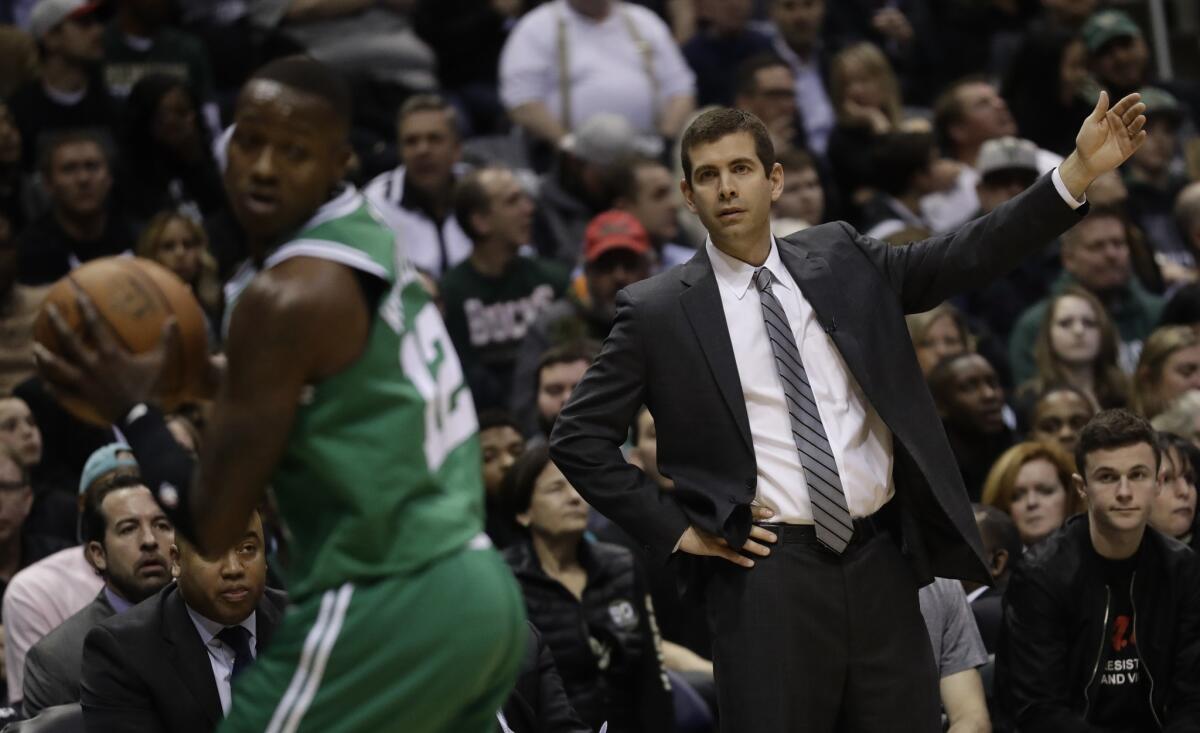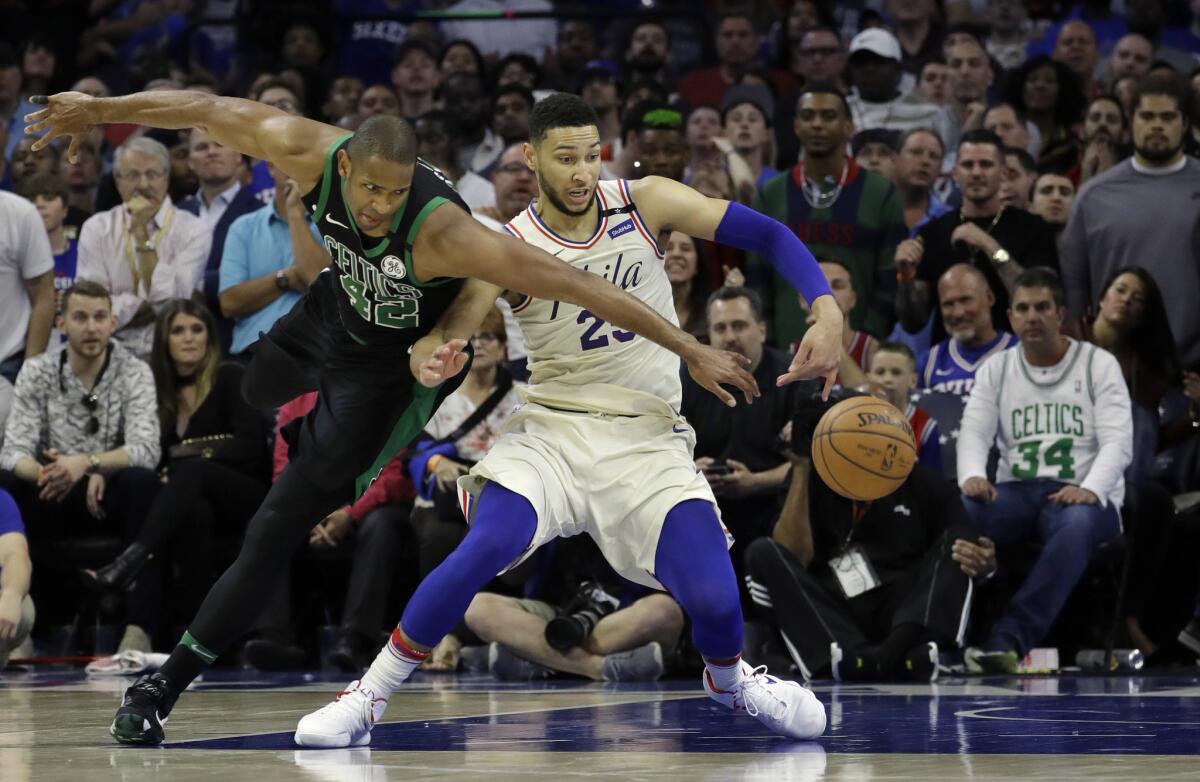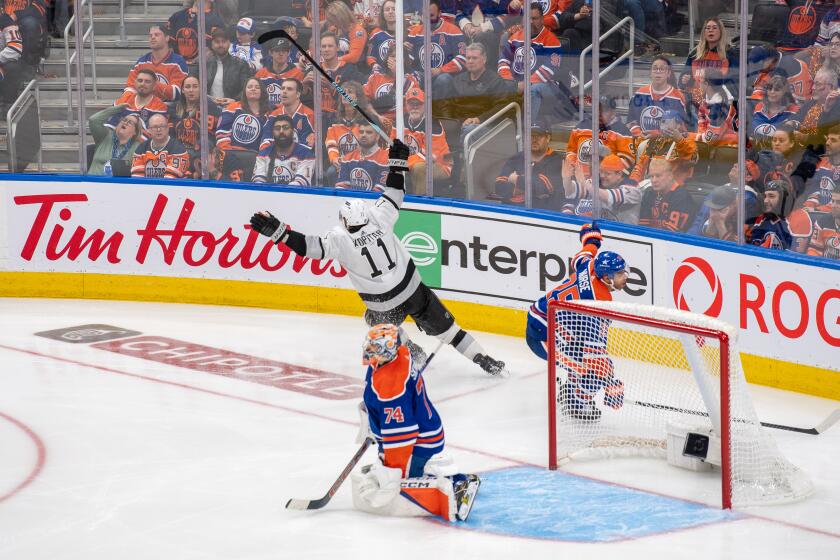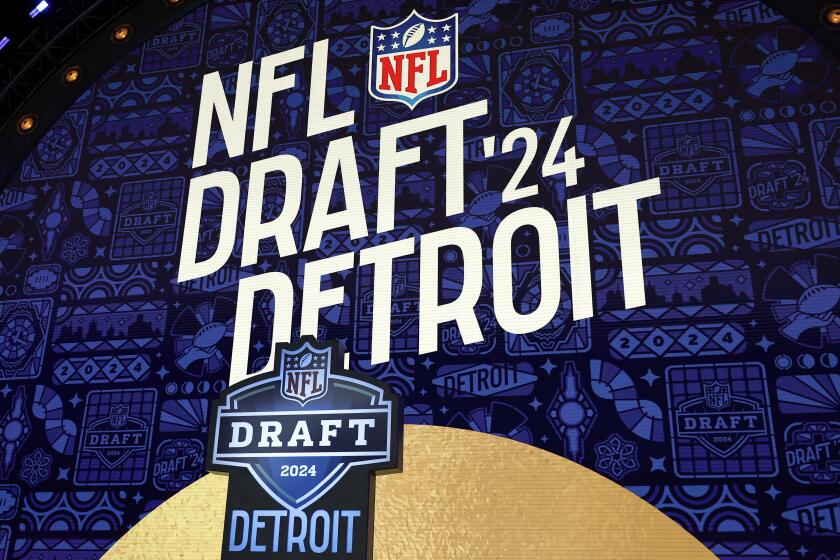Celtics’ success might be a surprise, but Brad Stevens and Co. earned another shot at Cavaliers
There was a vision for the Boston Celtics before the 2017-18 season, one that included franchise-altering additions of Kyrie Irving and Gordon Hayward paired with the spoils of the most lopsided NBA trade in the last decade.
A team that had reached the conference finals the previous season seemed destined for more.
This was the culmination of a rebuild that began when Paul Pierce, Kevin Garnett and Doc Rivers left the organization in the same summer. A rebuild that began with a 57-loss season and a first-time NBA head coach had morphed into a legitimate championship contender in five years.
It lasted for less than six minutes.
In the first quarter of the season opener, Hayward leaped and landed so horribly that his left leg snapped, his foot pointing due west instead of north.
“It was really tough,” Boston rookie Jayson Tatum said. “Everybody was upset that we just lost a teammate. But we also understood that we had 81 games left. We couldn’t make that an excuse if we still wanted to be successful.”
Out of that wreckage, the Celtics and coach Brad Stevens have become one of the best stories in the NBA.
Now without Irving, lost to knee surgery late in the regular season, the Celtics are returning to the conference finals.
The closer you look, the less surprising it seems.
::
The deification of Stevens began long before Game 3 of the Eastern Conference semifinals in Philadelphia, but when he crafted a successful last-second out-of-bounds play, it accentuated his standing as one of the league’s best coaches.
Stevens, a former Division III basketball player who worked himself up from a volunteer assistant at Butler to the most successful coach in the program’s history, almost instantly became a darling to those in basketball who obsess over Xs and O’s.
Scouts around the league point to Boston’s offensive sets as the most creative in the NBA. He’s such an adept play-caller, his players don’t pout when Stevens calls a timeout late in the shot clock — a practice largely unheard of in the NBA — to correct what he sees on the court.
In a game where terms like “rhythm,” “flow” and “pace” are buzzwords, these timeouts are unique and it took time for his players to get used to them.
“I’ve learned to just trust his instincts and judgments,” Celtics center Al Horford said after Game 3. “It just seems like he makes the right decision every time.”
After Philadelphia won Game 4 to extend the series, J.J. Redick was asked how many coaches truly matter in the NBA, making their teams a few points better each night. Was it 10?
“Is it that many?” he responded.
However small that group is, Stevens has to be included despite not winning a championship.
While Stevens can’t fully achieve greatness until he wins a title — because in the NBA, rings matter — his star has risen so greatly this season that one Boston columnist asked his Twitter followers if they would choose Stevens to start an expansion franchise over any available player in the league.

It was a ridiculous question. Of course you’d rather have LeBron James, Kevin Durant, Stephen Curry or James Harden. More than a third of the 20,878 respondents still chose Stevens.
::
The impact a coach has on his team’s wins and losses is an inexact science, with no real statistics to rely on outside of specifics like proficiency on out-of-bounds plays.
Basketball, ultimately, is a player’s game, and good coaching can go only so far without great players. Luckily for Stevens and the Celtics, they still have a great player healthy and in uniform.
Horford, who signed with Boston during free agency in 2016, was the best player on the court during the Celtics’ 4-1 series win over Philadelphia, despite scoring more than 15 points just once.
Among the best all-around big men in the NBA, Horford’s ability to stretch defenses to the three-point line, to handle and pass the ball, to post up and to defend all inches of the court goes well beyond measurable statistics. It’s also what made him an All-Star.
“He’s so different. I mean, how good is he?” Philadelphia coach Brett Brown said before Game 4. “Like, if you didn’t appreciate Al Horford by now, you better wake up.”
For as good as Stevens’ inbounds play was at the end of Game 3, it was Horford perfectly using his body to create space for the winning shot. And with Game 5 in the balance, it was Horford deflecting passes, clearing out space around the basket and skying for alley-oop dunks.
“He just makes everybody’s job so easy,” Celtics guard Terry Rozier said.

Without Horford and Stevens, Boston would’ve been stuck struggling to sneak out of the first round. With Horford, they’ve got a crack at LeBron James in the conference finals.
“He’s like the engine of the team,” 76ers forward Ersan Ilyasova said.
::
Was it Stevens’ expert management of game situations and his roster that got the Celtics to this point? Was it Horford’s versatility and expertise? Was it the team’s hardened psyche after seeing one of its stars shatter bones on opening night?
All of the above, but there was also help from the front office.
General manager Danny Ainge put the Celtics back together faster than anyone could’ve expected.
“We had a lot of resolve when things didn’t go our way. Maybe that was something because of all those experiences we went through earlier,” Stevens said. “I think it’s probably more so who Danny put on this team. There are a lot of tough guys, a lot of guys who don’t let what happened yesterday affect them and just move on.”
Ainge’s rebuild began following Doc Rivers’ exodus in 2013. He pillaged Brooklyn for draft picks in exchange for Pierce and Garnett, landing his wings for the future in Jaylen Brown (in 2016) and Tatum (in 2017).
He then hired Stevens, by far the NBA’s youngest coach then at 36. Each year Ainge slowly assembled the roster that would carry the team to the postseason. He also got another top pick, the Lakers’ protected first-round selection in 2018 from Philadelphia, when he moved back in the draft to take Tatum.
Rozier, one of their playoff stars, is a 2015 first-round pick who slid in seamlessly for Irving when he went down late in the season while Marcus Smart, another top pick in 2014, is the kind of physical guard that makes a difference in the postseason.
Even without Hayward and Irving, the Celtics are stacked.
“They’ve got a lot of really, really good players,” Redick said.
The Celtics will enter the Eastern Conference finals as an underdog to James and the Cavaliers, as they should. But to count them out at this point is a mistake no one should be making.
“We’re together. And we find our way. That’s been us,” Rozier said. “No matter who is out there, no matter what the situation is … we’ve never been rattled. We always believed in the next guy up.
“We always believed in each other.”
Twitter: @DanWoikeSports
More to Read
Get our high school sports newsletter
Prep Rally is devoted to the SoCal high school sports experience, bringing you scores, stories and a behind-the-scenes look at what makes prep sports so popular.
You may occasionally receive promotional content from the Los Angeles Times.







